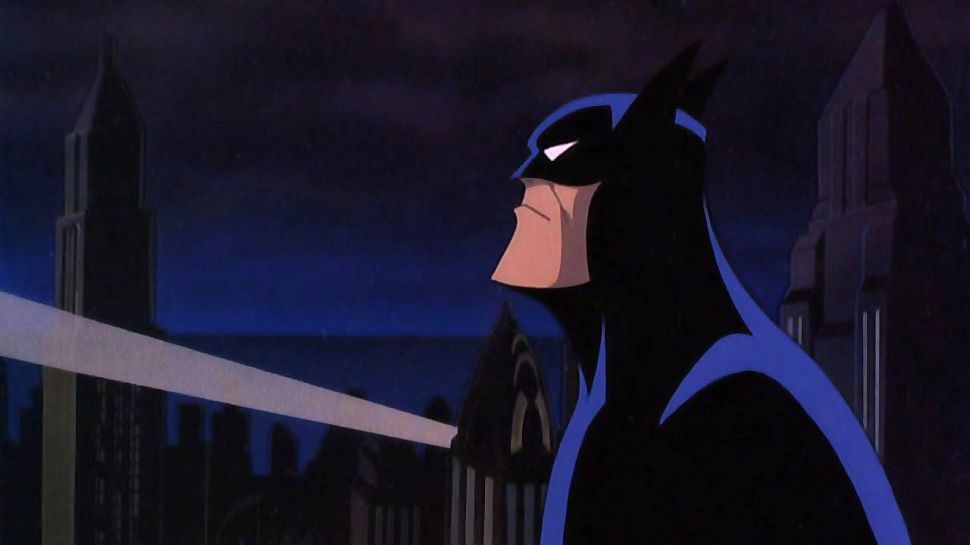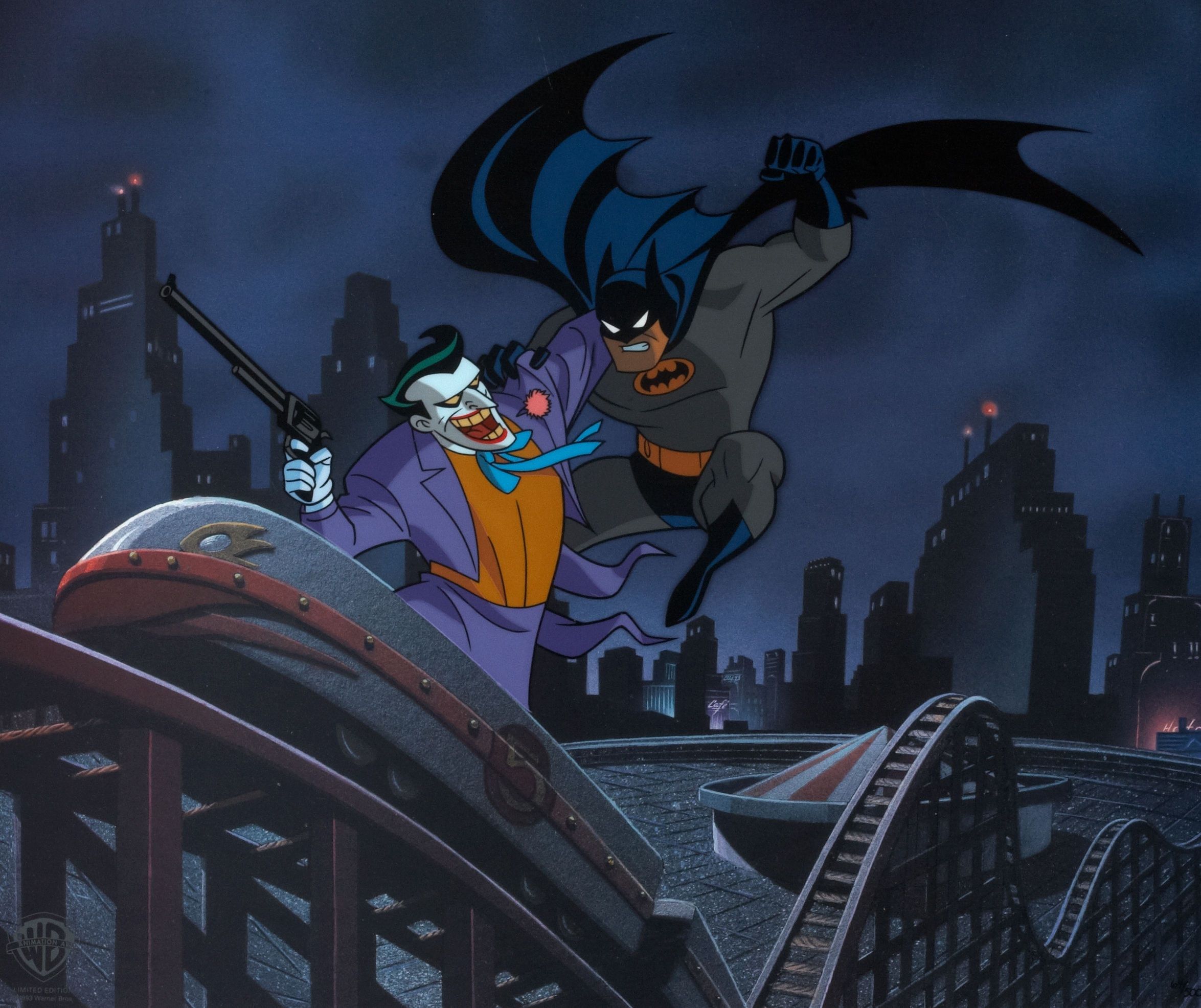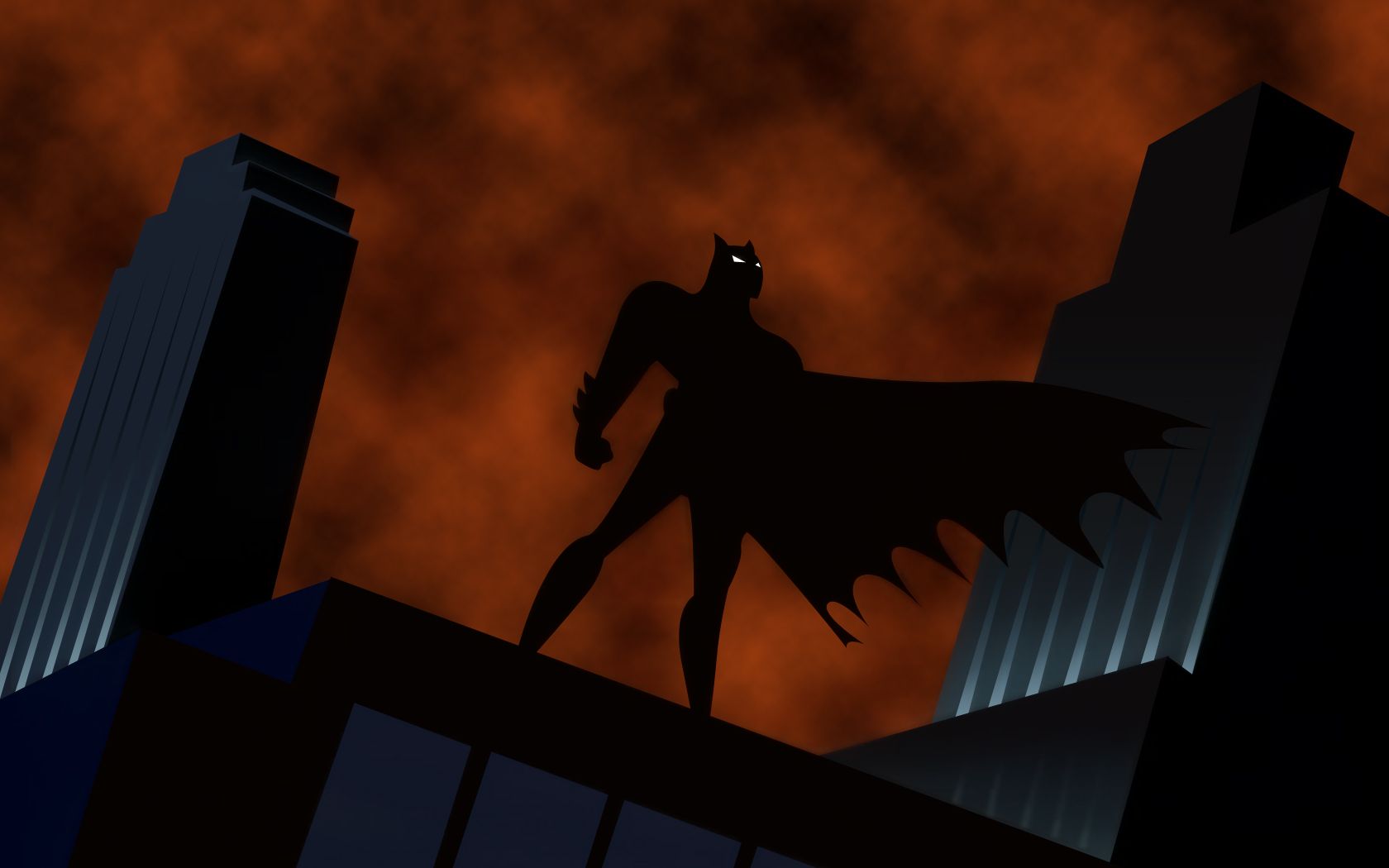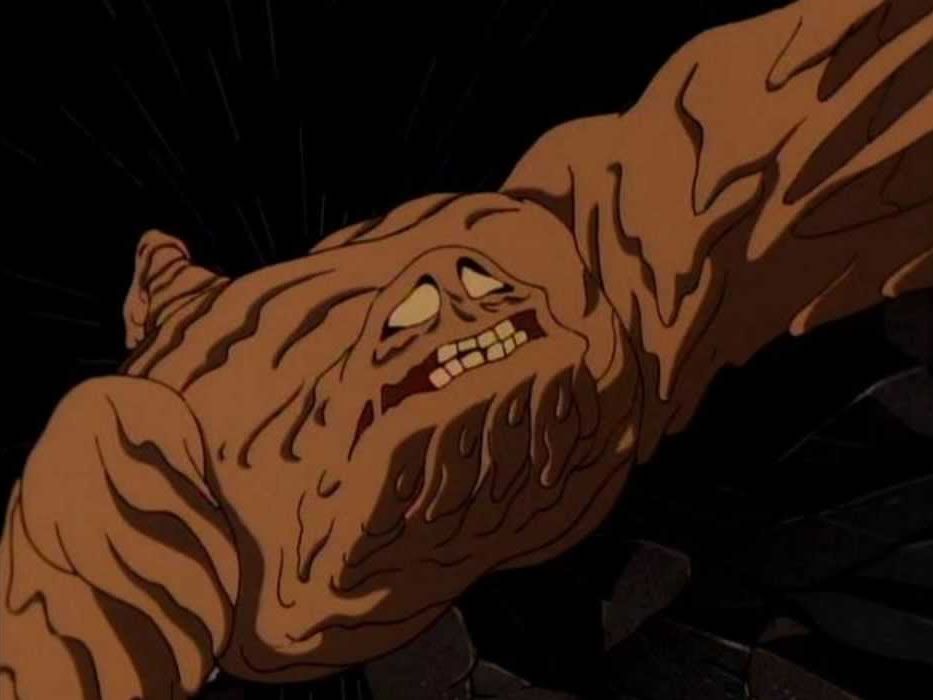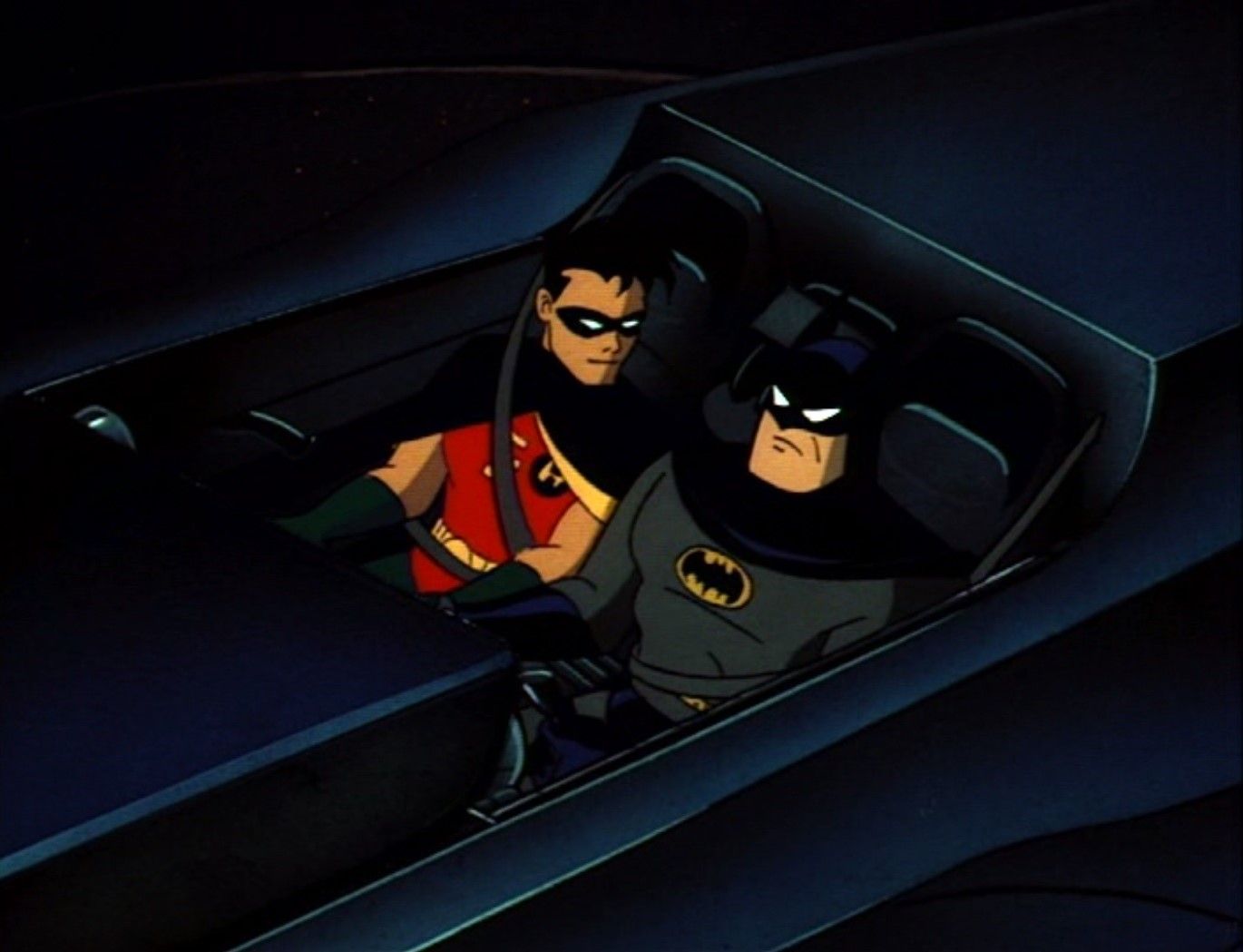I am a Batman fan, and to a greater extent, a superhero geek, largely because of Batman: The Animated Series. Bruce Timm and Eric Radomski’s show hit right at the time when I was still watching cartoons, but was willing to accept ones with slightly more complex themes and characters, and I was already familiar with Batman thanks to the silly but wholly different 1960s TV series and Tim Burton’s movies.
The show brilliantly illustrated how Batman was surprisingly dark and twisted, but never off-putting or grotesque. Timm’s art and the outstanding writing crew drew into the Batman mythos in a way that found the balance from The Dark Knight Returns comic, turning the character on his head while still carving out a space that wasn’t completely in Burton’s films. Granted, episodic television gives creators a weekly half-hour template where they can expand the characters and mythos whereas films are confined by a few hours. Nevertheless, the minds behind The Animated Series took full advantage of their space to provide nuance and shading into every episode, and while it was largely an episodic series with the occasional two-parter, each episode was rich and presented Batman at his best.
While other adaptations haven’t necessarily done a disservice to Batman, The Animated Series through its design, artwork, writing, and form was able to take the character to new heights for the following reasons.
Well-Rounded Batman
Most of what we’ve seen of Batman in the movies is that he’s great at punching things and driving his cool car. His skill as a fighter is unparalleled, so really what you’re looking at is a warrior, which is fine, but that puts too much of an emphasis on his brawn rather than his brains. Keep in mind that Batman started in the pages of “Detective Comics”, and The Animated Series never forgot that Batman was a “detective”. It even goes so far that when Ra’s al Ghul appears (pronounced “Ray-esh” al Ghul so that I get annoyed every time I watch Batman Begins) he calls Batman “detective” as a sign of respect.
To be fair, The Animated Series, to keep the story expedited, would usually have the Bat-Computer do the heavy lifting and have Bruce run clues through the system to figure out the answer, but at least he was still doing detective work and using his mind rather than just punching his way through every situation.
There were also great episodes where he would have to outsmart his way through situations. One of the more memorable episodes is "The Cape and Cowl Conspiracy" where Batman must outwit Josiah Wormwood, a master of setting traps. There’s also every episode with the Riddler or even ones that bent reality like “Perchance to Dream” where the Mad Hatter traps Batman inside a peaceful illusion.
While these episodes drew inspiration from the comics (“Cape and Cowl” is a direct adaptation; “Perchance to Dream” is reminiscent of Alan Moore’s Superman story “For the Man Who Has Everything”), that made them no less effective in exploring the character’s psyche and pushing beyond a crime fighter who’s skilled at every martial art.
A Batman Who Can Actually Move
It’s a little funny that the Batman movies are so reliant on Batman’s expertise at fisticuffs when we still haven’t developed a good Batman costume yet. Even The Dark Knight acknowledged within the film that just being able to move at the neck was a huge improvement. That’s not a fault of the costume designers; we just don’t have the technology to make someone both armored and fast.
On the page and in animated form, no one has to worry about how Batman moves because there is no real costume. Fabric and rubber are no longer a concern. They can make the character move where they want and how fast they want, and The Animated Series could always be counted on to concoct some thrilling action.
Maybe one day we’ll have the technology to give Batman an outfit where the actor inside can move as fast as someone in spandex, but for the time being, directors have opted to keep their Caped Crusaders in rubber, which looks fine, but it will never give the actor the speed of his animated counterpart.
Gorgeous Design
From a technical perspective, The Animated Series is just about perfect. While some episodes are better animated than others (something that usually comes down to the studio doing the animation), Timm’s art style is impeccable, and the whole art deco look is utterly inspired. It gives Gotham a classic look that’s never dated, always imposing, and yet entirely seductive. It’s not a “gritty” approach, and yet it has a noirish criminal element that’s always lurking behind every darkened corner.
The show grabs you from the opening credits with Danny Elfman’s tremendous theme, the stark silhouettes, the thundering action, and the powerful figure of the Dark Knight standing like a sentinel atop Gotham City. It’s fearsome yet protective rather than the fascistic figure struck by The Dark Knight Returns. The showrunners took the inspiration they needed from Batman’s late-80s resurgence and then made it work as what was ostensibly an afternoon cartoon show.
The Animated Series also had top-notch voice talent. Huge credit goes to Andrea Romano for assembling a brilliant voice cast. For me, when it comes to animated Batman, there’s only Kevin Conroy (who, unlike every other Batman, never overdoes it with the Batman voice). For animated Joker, there’s only Mark Hamill. The show is also filled out with surprising choices that paid off immensely like Paul Williams for The Penguin and Roddy McDowall as the Mad Hatter. There’s not a single actor who didn’t completely embody their character, and in the case of Arleen Sorkin, she was crucial in defining Harley Quinn since the show created the character.
Sympathetic Rogues
With the exception of The Joker, The Animated Series makes every one of its villains almost as tragic as Batman if not more so. Harley Quinn is in an abusive relationship. The Riddler’s debut episode is titled “If You’re So Smart, Why Aren’t You Rich?” Mr. Freeze will never be able to save his cryogenically frozen wife Nora. Clayface is a narcissist who turned into a monster. Babydoll suffers from a disease where she can’t grow up. The list goes on and on.
The show should be commended for that level of maturity because it shows how Batman didn’t succumb to his demons, and that’s what sets him apart from his adversaries. While they took their personal failings as entitlements to do evil, he took it upon himself to try and right the wrongs. The Animated Series wisely stays away from the “tortured” Batman and shows his positive relationships with Gordon, Alfred, Robin, and Barbara. Meanwhile, his rogues are all self-destructive, but we can’t help but feel a little bad for some of them.
That sympathy is an important lesson for the younger viewers, and it also stops a cartoon from being cartoonish. And when the show does land on an unequivocally evil character like the Joker, it makes him an absolute delight to watch by making him both charismatic and terrifying (Hamill’s voice performance as the Joker is better than his on screen performance as Luke Skywalker). As always, The Animated Series manages a perfect balance in what it hopes to achieve.
Neither Too Dark or Too Campy
The Animated Series’ maturity was remarkable considering it was ostensibly an afternoon cartoon show. Batman’s always been a dark character, but in addition to painting his nemeses in a tragic light, the show also never shied away from literary thought (like the episode “Tyger, Tyger,” which blended the poet John Blake with The Island of Dr. Moreau) and wasn’t afraid to be outright horrific like the creepy two-parter “Heart of Steel” which featured androids with rip-away faces.
And yet the show didn’t revel in these aspects or use them as a badge of honor. The show could be just as likely to employ humor or light-heartedness to get across its point. The banter between Batman and Robin is always a delight, and it gets even better when Batgirl is in on the action (one of my few complaints against TAS is that there’s not enough Batgirl; her presence takes the show to a new level because she adds so much to the character dynamics). That’s not to mention the hilarious Harley Quinn, arguably the show’s greatest gift to the Batman universe.
Batman: The Animated Series realized that Batman could be more than just one tone or just one kind of hero. It’s a rich series that used its format to flesh out the character beyond the pages, and while I’m always eager to see the latest Batman movie, they all pale in comparison to what Timm, Radomski, and their writers accomplished on the small screen.
All episodes of Batman: The Animated Series are streaming on DC Universe. The Complete Series is also available on Blu-ray.


